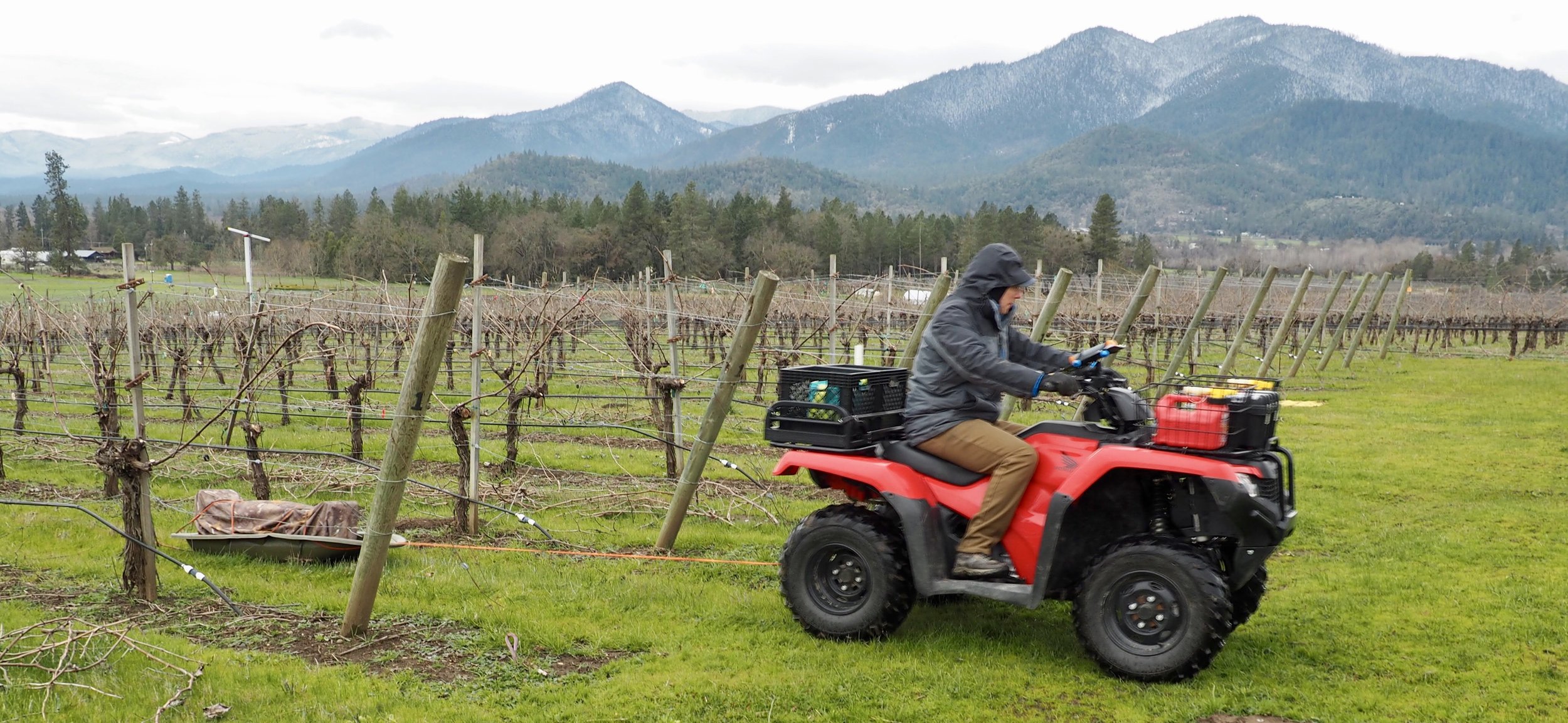Electromagnetic Soil Scanner
Our soil studies at Troon Vineyard started today with Nick Madden here for the day to do a complete electromagnetic soil scan of our vineyard blocks. We've retained Dr. Paul Anamosa and company to do a complete analysis of our vineyard blocks. Armed with this scan data we will be selecting locations for about eighty 5 feet deep pits to fully map our soil types. This data will help us select the proper varieties as we add new vineyard blocks and replant old ones. The scanner is on the sled behind the ATV. Here is some information on exactly what Nick is doing https://d.pr/dtaYMK
”Electromagnetic induction (EMI) has been used to characterize the spatial variability of soil properties since the late 1970s. Initially used to assess soil salinity, the use of EMI in soil studies has expanded to include: mapping soil types; characterizing soil water content and flow patterns; assessing variations in soil texture, compaction, or- ganic matter content, and pH; and determining the depth to subsurface horizons, stratigraphic layers or bedrock, among other uses. In all cases the soil property being investigated must influence soil apparent electrical conduc- tivity (ECa) either directly or indirectly for EMI techniques to be effective. An increasing number and diversity of EMI sensors have been developed in response to users' needs and the availability of allied technologies, which have greatly improved the functionality of these tools. EMI investigations provide several benefits for soil studies. The large amount of georeferenced data that can be rapidly and inexpensively collected with EMI provides more complete characterization of the spatial variations in soil properties than traditional sampling techniques. In addition, compared to traditional soil survey methods, EMI can more effectively characterize diffuse soil bound- aries and identify areas of dissimilar soils within mapped soil units, giving soil scientists greater confidence when collecting spatial soil information. EMI techniques do have limitations; results are site-specific and can vary depending on the complex interactions among multiple and variable soil properties. Despite this, EMI techniques are increasingly being used to investigate the spatial variability of soil properties at field and landscape scales.”


























